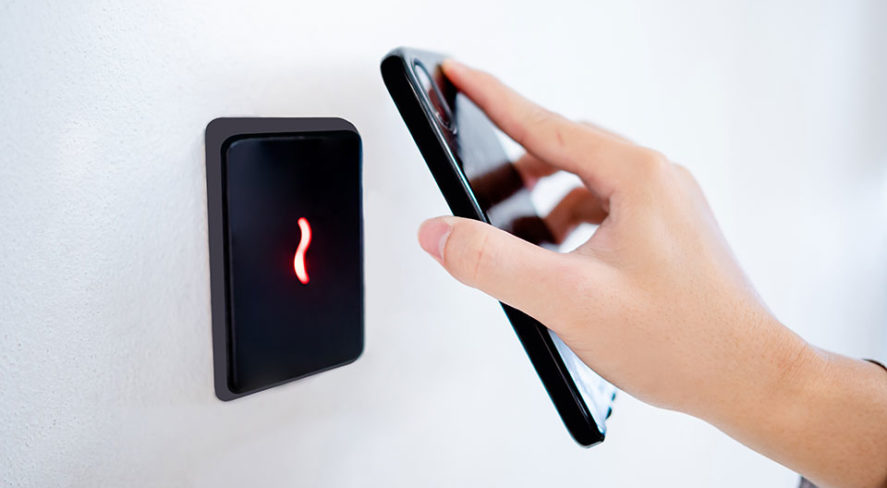The March to Mobile: How Mobile, Cloud-Based Access Control Is Changing Security


“Mobile” might seem like a buzzword in the access control industry these days; however, use cases and demand are rapidly increasing. According to a 2021 survey from Campus Safety, 62% of respondents have purchased access control solutions with mobile credential options over the past two years. What’s more, an estimated 14.7 million mobile credentials were downloaded globally in 2020.
Schools, enterprises, health care organizations and commercial real estate companies are among just a few industries embracing mobile access control. But is going mobile really worth it? And if so, how should IT and security professionals go about sifting through all the options available?
A Time Saver
When considering mobile access control, it’s important to understand the advantages and disadvantages from both administrative and user perspectives.
IT administrators face growing challenges when it comes to time management. Automation has led to smaller IT teams trying to handle more complex workloads. Consequently, time is at a premium for IT and security professionals.
Mobile keys are particularly useful in settings where users change frequently, and access permissions must be adjusted quickly – this is particularly true on college campuses where there is a constant cycle of matriculating and departing students. If done manually, provisioning these students would mean spending hours activating and deactivating thousands of physical key cards. The result would be a time-consuming process in which administrators must divert resources away from other important tasks.
Enterprise and commercial real estate teams face a similar predicament. When new employees arrive, administrators must distribute credentials in an efficient manner. Traditionally, these credentials would be manually entered into a computer and a physical key card would have to be programmed.
The cloud and mobile access control change this. Instead of a manual process from start to finish, it’s possible to automate provisioning with integrations. Integrations like Okta or Google Workspace allow administrators to preprogram role-based permissions globally, then distribute them to the user’s mobile device in just a few clicks – no key card necessary. From a user perspective, mobile credentialing means less time spent waiting and one less task to have to worry about.
Technology has reached a point where doing this “song-and-dance” routine is impractical, and many IT and security teams are beginning to understand and embrace the concept of going mobile to save time and money.
Flexibility From Afar
The ability to delegate time away from provisioning might be enough to sway some IT and security teams towards mobile. But the deal gets even sweeter. Mobile keys give IT and security professionals flexibility in how they provision—a flexibility that physical key cards and key fobs do not.
Consider IT and security teams protecting college campuses. If Billy, a student, decides he wants to switch dorm rooms midway through the year, instead of collecting his key card, administrators can adjust access permissions remotely. They can give Billy access to his new room and deactivate access to his previous room without ever having to touch a key card. When the security administrator cancels the mobile key, it vanishes immediately from Billy’s phone.
The same occurs in an enterprise situation. If there is an integration between an identity management and access control system, then the user will be removed from each system accordingly.
While remotely giving and deactivating new permissions is convenient, the mobile flexibility serves a more practical purpose – greater security.
Leveraging the Security of Mobile Credentials
The flexibility of mobile keys makes them ideal when regularly adjusting credentials. Security administrators can change permissions on the fly without ever collecting a key card. But how effective are mobile credentials when it comes to security?
From an end-user perspective, physical credentials such as key fobs or key cards are much more susceptible to theft, damage and becoming lost, leaving facilities vulnerable. When mobile access control is combined with the cloud lost or stolen credentials can be immediately made inactive.
Even the way information is transmitted is more secure with smartphones.
Traditionally, key cards used passive radio signals (RFID) to communicate with door readers. However, more current communication languages exist. Near-field communication (NFC) and Bluetooth low energy (BLE) are each used to exchange data. Each technology is over 20 years newer than RFID, which means more up-to-date encryption for security teams.
Concerns of Mobile Access Control
Change is often viewed with an air of skepticism and mobile credentialing is no exception. While some IT and security teams have been quick to embrace mobile credentialing for its “cool” factor, others remain wary of adopting the new technology. But how much is there to actually be concerned about?
Cybersecurity Threats
You have probably seen it in sci-fi movies—the protagonist discovers their phone has been hacked and their most valuable data compromised.
In reality, mobile security has come a long way. NFC and BLE provide multiple encrypted signals for data transfer from a user’s phone to the card reader. These signals have made mobile more secure than key cards, which can be lost or cloned.
User Acceptance and Privacy Concerns
Despite the assurances of NFC and BLE, some end users simply do not want new software on their personal phones. Unfortunately, there is no work around for this issue. Employees may be concerned about their employer tracking their whereabouts or monitoring what they do in their personal time.
What About Battery Power?
Another concern with mobile credentials pertains to battery life. What happens when an employee’s phone runs out of power? Are they stuck or does the credential continue working?
Headway is being made when it comes to using mobile credentials on a “dead” phone. Recently, Apple announced that users of the iPhone and Apple Watch would be able to store building credentials in their Apple Wallet. If, for example, a user’s iPhone dies, the credential could still be used for up to five hours.
The Verdict
Mobile access control is here to stay. End-user demand keeps rising, and security administrators are seeing the convenience and security brought about by mobile credentials. For end users, technologies like Apple Wallet and Google Wallet, have made it easier than ever to store access badges. Gone are the days of misplaced key cards and getting locked out of the office because of a forgotten badge. For administrators, cloud-based mobile has introduced a quick and secure way of distributing new credentials and deactivating old ones on a global scale — saving them time and money. Together, mobile and the cloud will increase efficiency, convenience and security for years to come.
